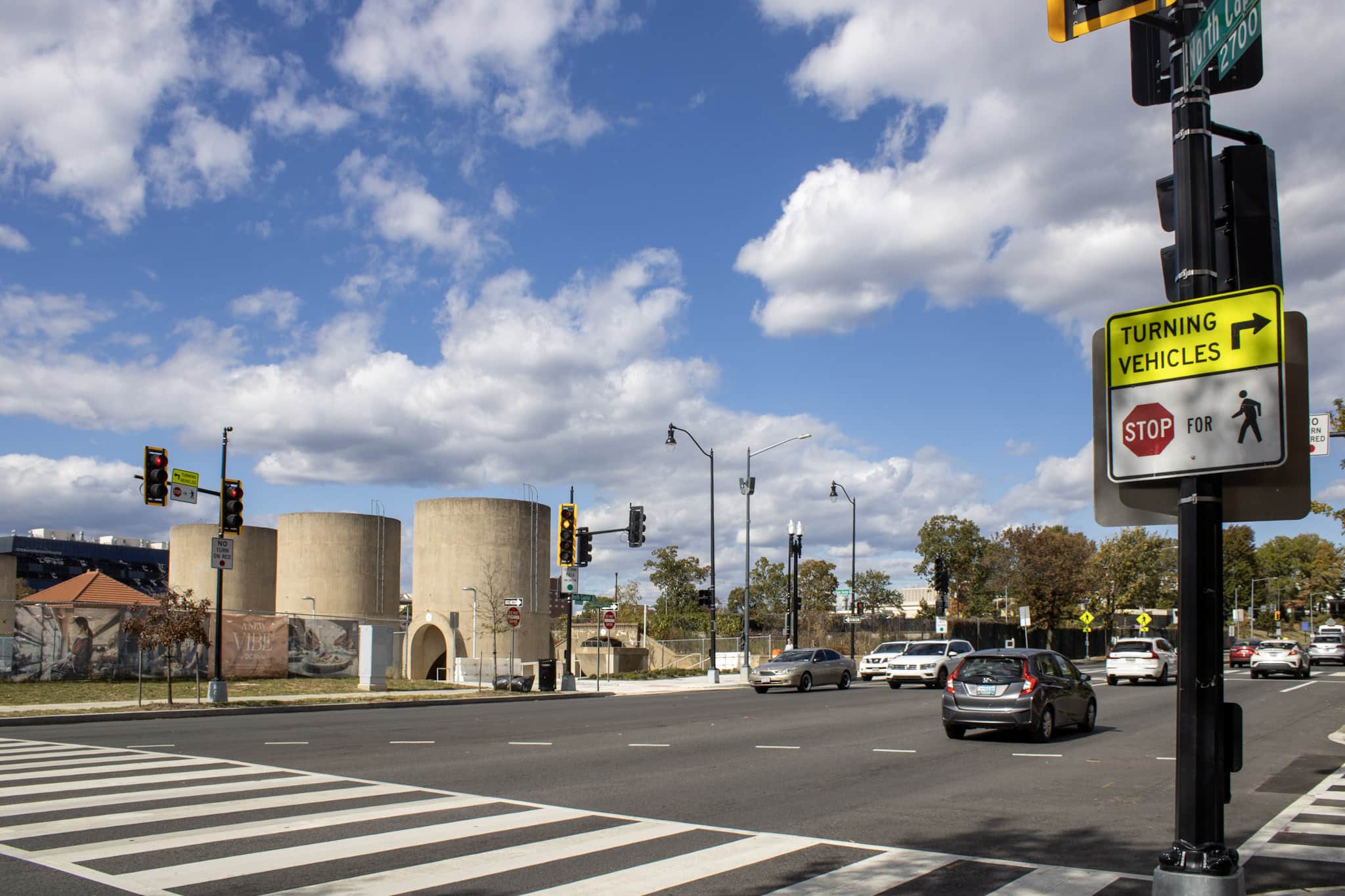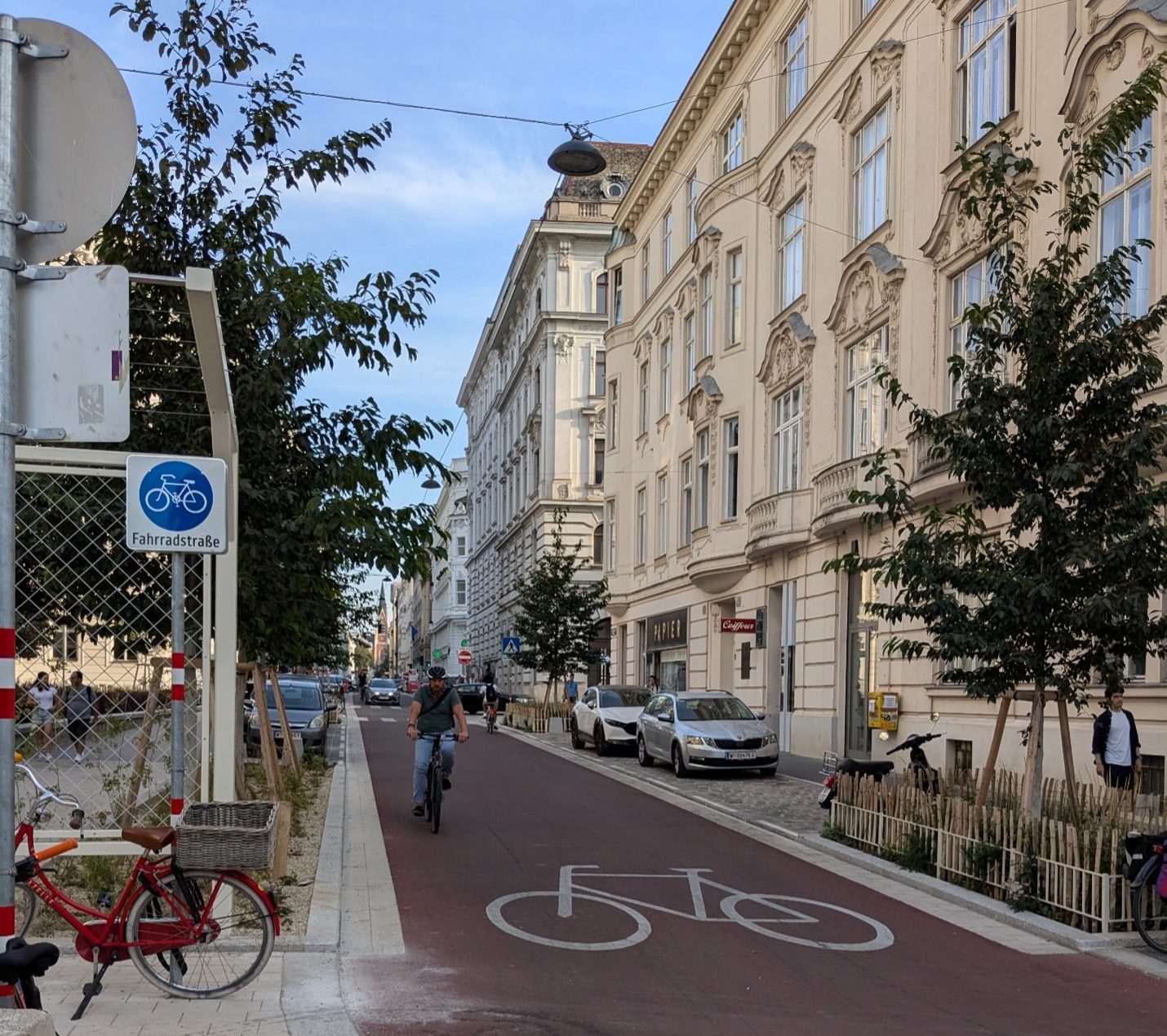
Transportation Abroad: Exploring Innovative Infrastructure in Central and Eastern Europe
Not only was it exciting to experience this new-to-me infrastructure, but what I observed can also inform my work. After all, some of these innovations may make their way stateside someday. Without further ado, here’s the list.
1. Look closely: This red traffic signal bulb in Tskaltubo, Georgia, is shaped like a heart! So whimsical and fun! All three countries I visited follow the Vienna Convention on Road Signs and Signals, an international set of standards for traffic signals. It is used in Europe, Southeast Asia, Africa, and South America. The United States is not a signatory to this convention; we have our standards through the Manual on Uniform Traffic Control Devices (MUTCD) and various state and local standards. As far as I know, the only shapes allowed to be displayed on a signal head are circular solid arrows and U-Turn arrows.
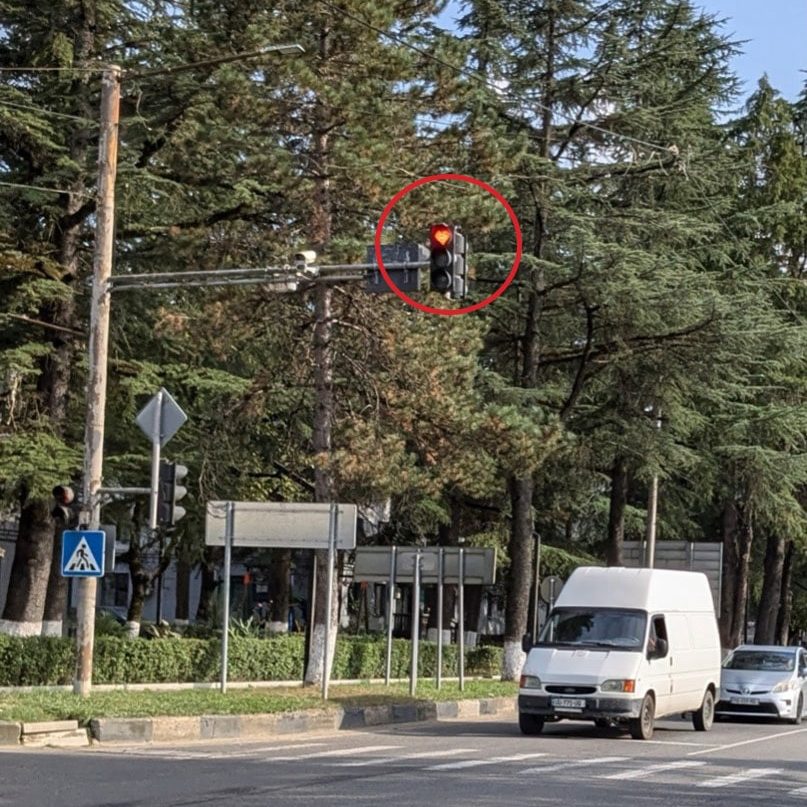
2. I noticed many narrow streets in the older quarters of cities have been converted to one-way with small bollard-like objects. Here are two examples: the first is in Sultanahmet, Istanbul, and the other is a converted roundabout at Mozartplatz in Vienna, Austria. Where I work in the Washington, DC, area, traffic calming measures such as curb extensions, narrower lane widths, flexible posts, and speed bumps are popular. However, bollards are seldom used in the roadway because they can hinder emergency vehicles.
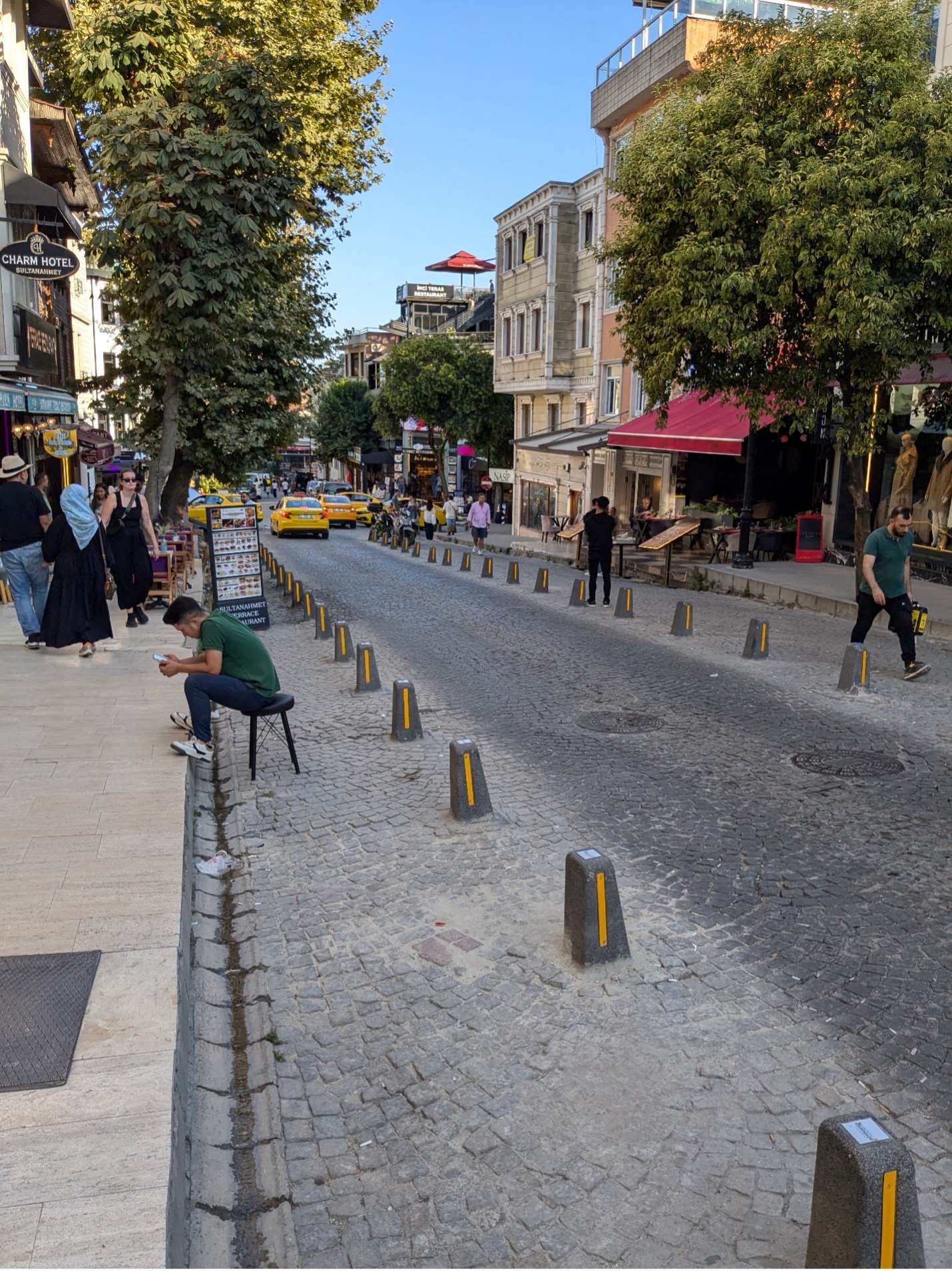
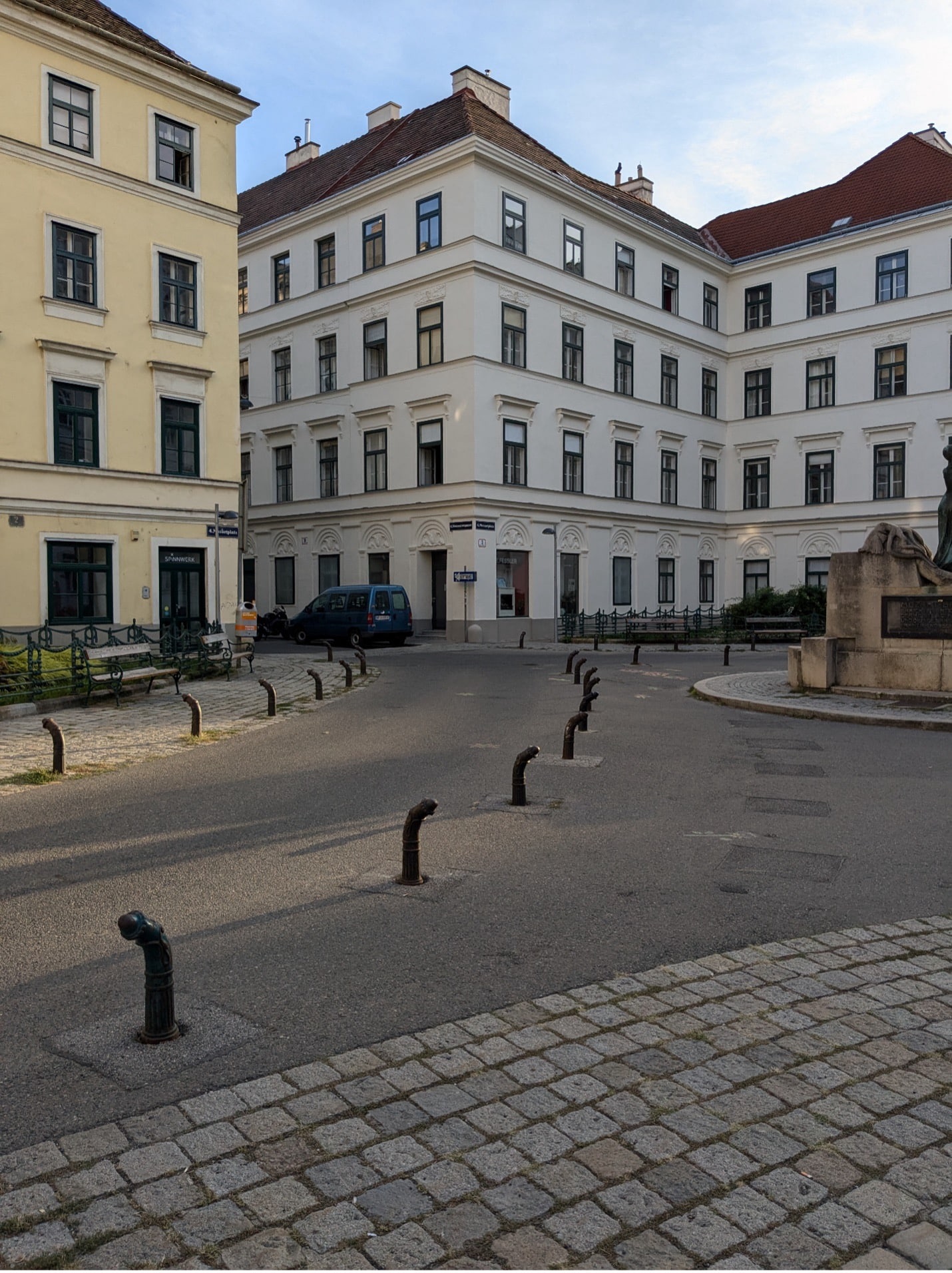
3. We conduct many parking studies here at Gorove-Slade. Still, I don’t know if we’ve ever studied or had a provision for dog parking like the one this supermarket in Kutaisi, Georgia, provides! While an underground parking space costs, on average, between $50,000 and $75,000 here in DC, installing this hook is relatively easy and inexpensive. Unfortunately, I don’t foresee DDOT asking for dog parking studies anytime soon.
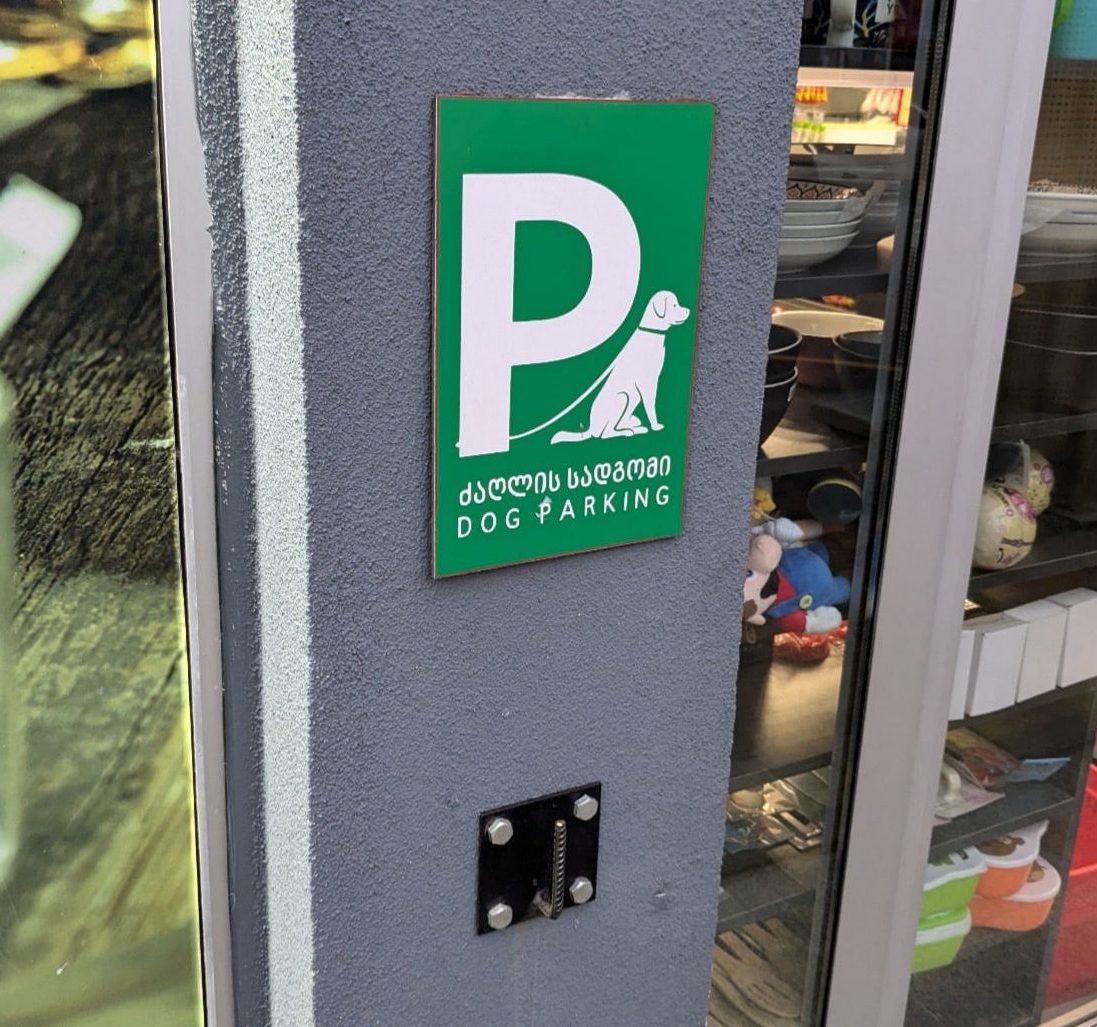
4. The metro in Tbilisi, Georgia, is similar to the one in DC, including super–deep stations. It was built back when Georgia was a part of the Soviet Union, which was known for its deep metro construction and elaborate station design. My hometown of Wheaton, MD, is home to the longest escalator in the Western Hemisphere at 230 feet in length. The stations in Tbilisi are nearly as deep, but the escalators move twice as fast! One nice feature of this metro is the clock at the edge that shows the current time when the last train left and when the next train is set to arrive. And yes, the train comes every 5 minutes!
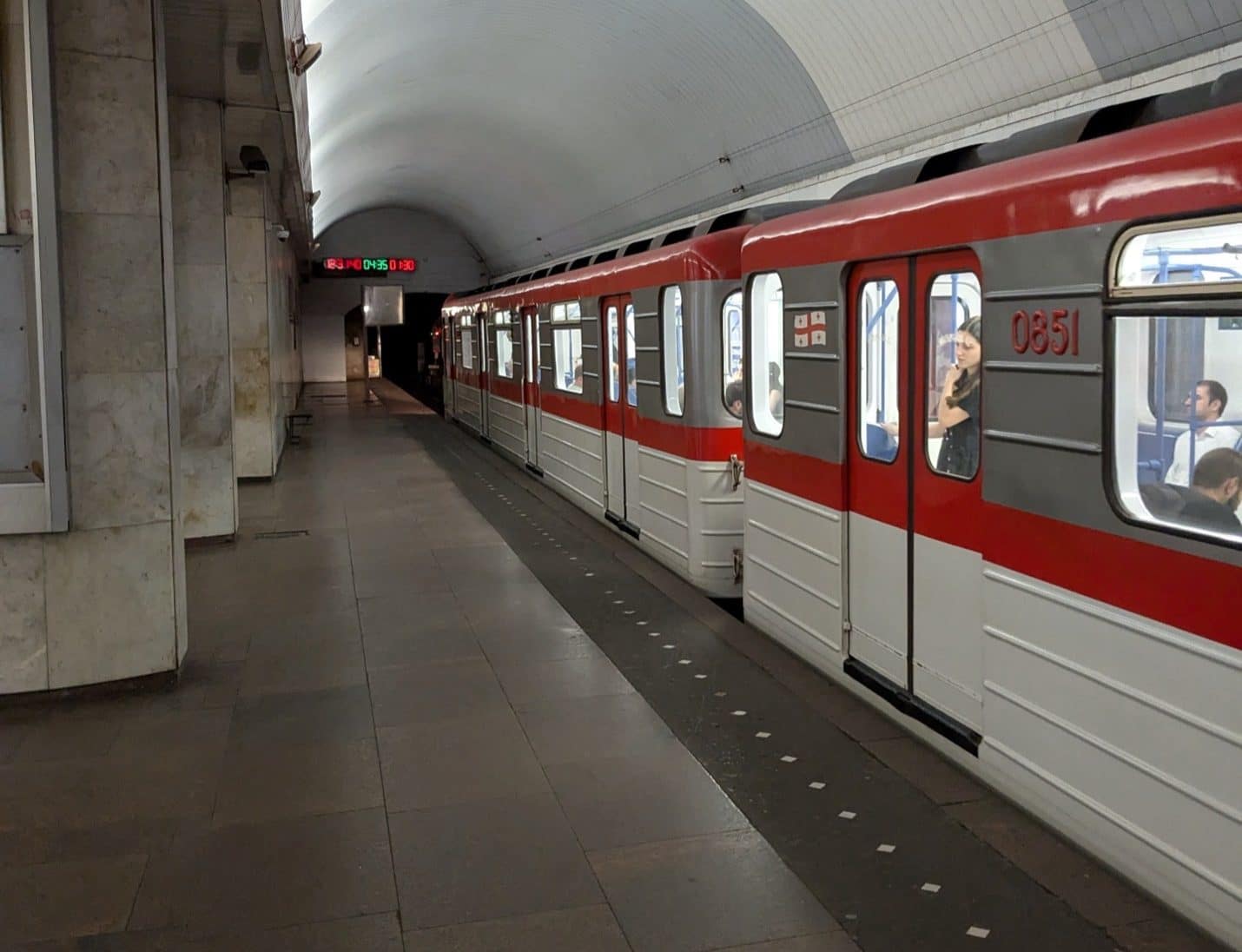
5. This new bike boulevard in Vienna looks similar to some shared curbless streets we have designed recently in DC, but the whole street is paved in a different color. Shared streets are becoming popular in commercial districts with much foot traffic and deliveries. I asked someone about this boulevard, and they said that the signals are all set to 10 mph bike travel so you can hit all the green lights when biking. The added benefit is that cars on this street never travel too fast, so it is not a through route. Locally, DC just changed timing for the first time on I (Eye) St, SW, which should promote safety for all users along that corridor.

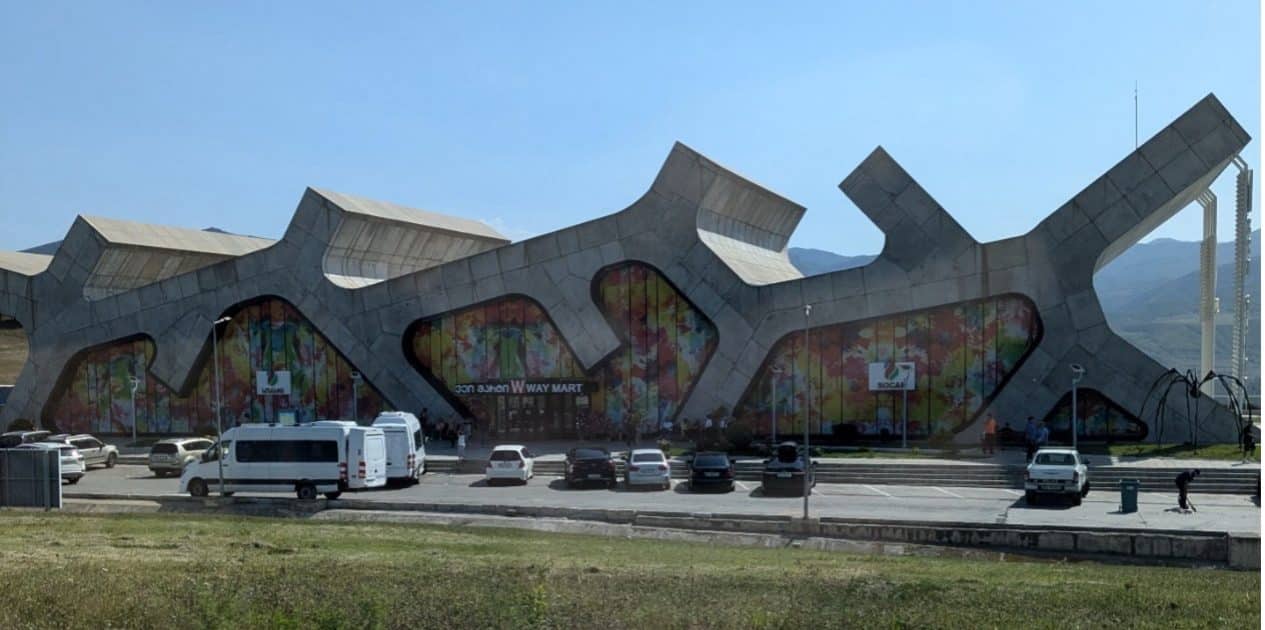
6. This rest stop off the main freeway in Georgia is the most extraordinary rest stop I have ever seen. They have gas pumps, a convenience store, a food court, and even some public art! Although we have really amazing art featured in the Metro system, I think our highway rest areas and welcome centers could benefit from more creativity in design.
